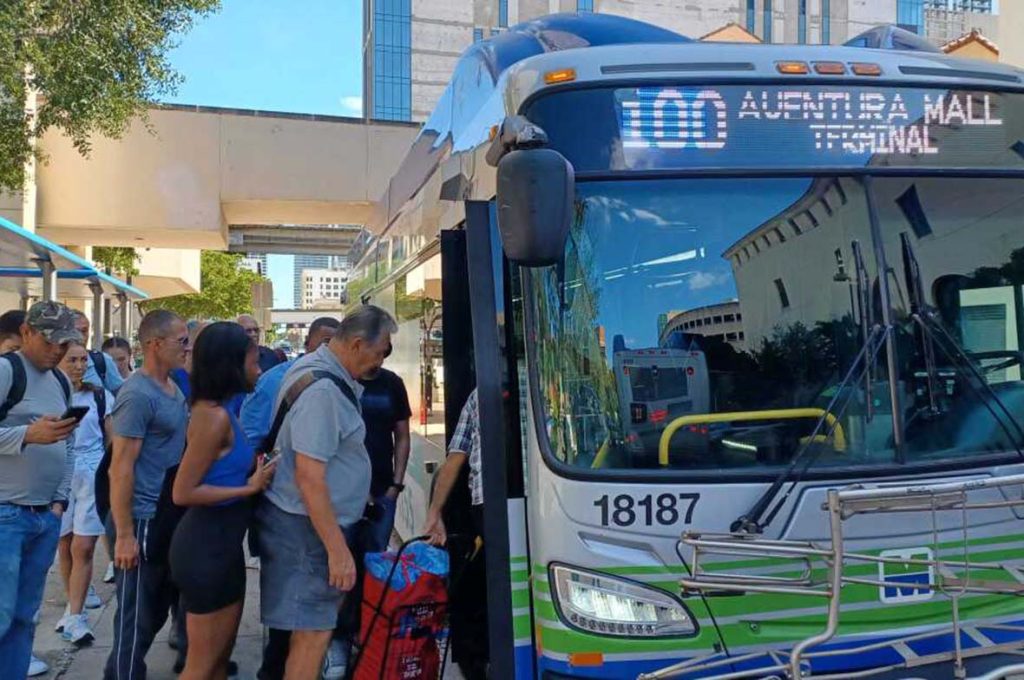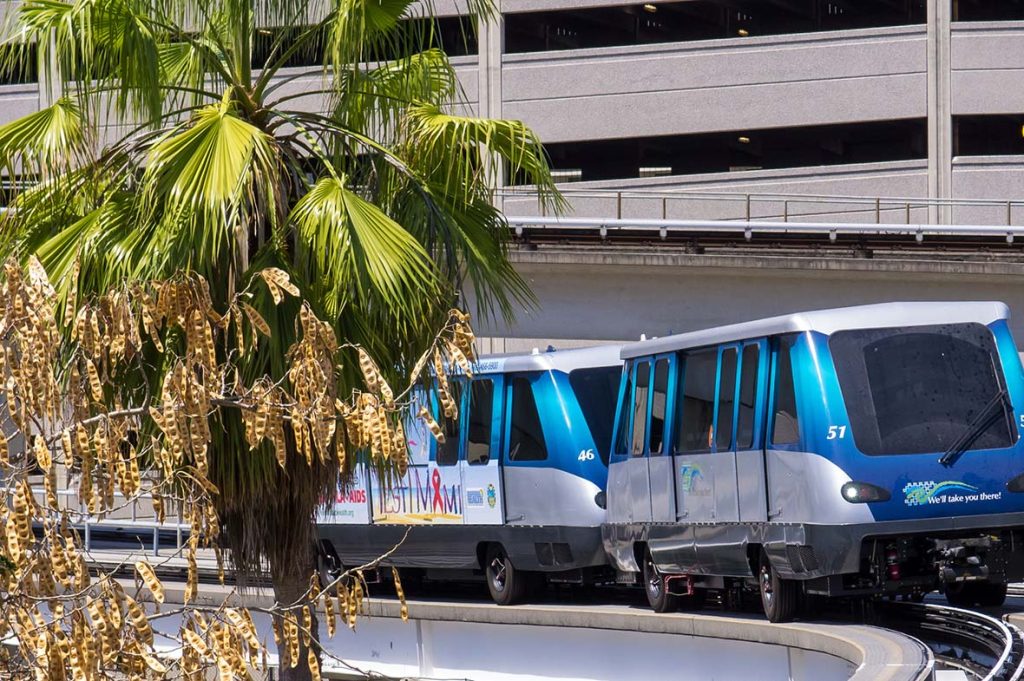When visiting Miami, a city known for its vibrant culture, stunning beaches, and diverse neighborhoods, navigating through its urban sprawl can be a challenge for first-time visitors. Luckily, Miami offers a variety of public transportation options that are not only convenient but also affordable. In this guide, I’ll provide a detailed overview of the public transit systems in Miami, including personal insights, travel tips, and important information on how to make the most of Miami’s buses, trains, trolleys, and other services.
Miami’s Public Transportation
Miami’s public transportation is managed primarily by Miami-Dade Transit (MDT), which operates buses, Metrorail, and Metromover. In addition, the city has a free trolley service and several ride-sharing services for those moments when public transportation doesn’t fit your plans. Whether you’re in town for a short vacation or an extended stay, understanding how these systems work can make your Miami experience smoother and more enjoyable.
1. The Miami-Dade Bus System
The bus system in Miami is one of the most extensive public transportation networks in the region, covering areas from Miami Beach to the suburbs. For travelers like me, who wanted to explore different neighborhoods and get off the beaten path, buses are essential.

How to Use the Bus System
The first step to using the bus system is obtaining a Transit Pass or using contactless payment methods, like a contactless credit card or mobile payment options like Google Pay or Apple Pay. The fare for a single ride is $2.25, which is reasonable considering the distances covered. You can also purchase a 7-Day EASY Ticket for $29.25, which allows unlimited rides on buses and Metrorail during that time period—a great option if you plan to explore different parts of the city extensively.
Each bus stop has a number and lists the routes that service that stop. The MDT app, along with other transit apps like Google Maps, can show you real-time bus schedules and the best routes to take depending on your location.
Key Routes for Tourists:
- Route 120 (Beach MAX): A great option if you’re staying in or visiting South Beach and want a direct route to downtown Miami.
- Route 150 (Miami Beach Airport Flyer): This express route connects Miami International Airport (MIA) with Miami Beach, making it a convenient and affordable way to get to your hotel without paying for a taxi or ride-share.
My Personal Experience
During my stay, I frequently used Route 120, especially when traveling between downtown and South Beach. The buses were clean, and the air conditioning was a life-saver on hot Miami afternoons. While the buses can sometimes be delayed due to heavy traffic, overall, they were a reliable way to get around.
2. Metrorail: Miami’s Light Rail System
The Metrorail is a 25-mile elevated train system that serves Miami and some of its surrounding areas, including Hialeah and Kendall. For visitors staying in central Miami or planning trips to nearby suburbs, the Metrorail can be a fast and efficient option.
How to Use the Metrorail
Metrorail operates from 5 a.m. until midnight, with trains arriving every 10 to 15 minutes during peak hours and every 30 minutes at other times. The fare for Metrorail is $2.25 per trip, the same as the bus fare, and transfers between buses and Metrorail are free if you use an EASY Card.
One of the things I appreciated about Metrorail is that it connects to the Tri-Rail system, a commuter rail service that runs from Miami to Palm Beach. This connection makes it possible to explore the broader South Florida area without needing a car.
Key Stops for Tourists:
- Government Center Station: This is the main hub for Metrorail and is located in downtown Miami. From here, you can transfer to buses, Metromover, and even catch the Tri-Rail.
- Culmer Station: If you’re interested in visiting historic neighborhoods like Overtown or the nearby art galleries, this station is a convenient stop.
- Vizcaya Station: This stop brings you directly to the iconic Vizcaya Museum and Gardens, one of Miami’s most famous attractions.
My Personal Experience
Metrorail was particularly useful when I wanted to escape the busy streets and avoid traffic. I took the Metrorail to explore downtown Miami, and I appreciated how the elevated trains offered unique views of the city. The stations were well-maintained, and signage was clear, making it easy to navigate even for someone new to the system.
3. Metromover: The Free Downtown Shuttle
If you’re staying in or visiting downtown Miami, the Metromover is a fantastic, free option for getting around. The Metromover is an automated people mover that serves the downtown and Brickell areas, with three loops (Inner Loop, Omni Loop, and Brickell Loop) that cover different parts of the city center.

How to Use the Metromover
Using the Metromover is incredibly simple because it’s free. Trains arrive every 90 seconds to 3 minutes, and you can hop on and off as you like. The service runs from 5 a.m. to midnight, just like the Metrorail. The Metromover stations are strategically located near popular tourist spots, restaurants, and shopping areas.
Key Stops for Tourists:
- Bayfront Park Station: Located right next to the popular Bayfront Park, this stop offers access to Miami’s waterfront. It’s also close to the Bayside Marketplace, a great place for shopping and dining.
- Freedom Tower Station: This station is next to the Freedom Tower, one of Miami’s most historic landmarks, and the Perez Art Museum Miami (PAMM), a must-visit for art enthusiasts.
- Brickell Station: Brickell is Miami’s financial district and also home to numerous trendy restaurants, shops, and bars.
My Personal Experience
I used the Metromover frequently while exploring downtown Miami. I loved that it was free and offered easy access to attractions like the Frost Museum of Science and the Adrienne Arsht Center. The Metromover cars were clean, and the ride was smooth. Plus, it gave me a chance to rest my feet between stops while still taking in views of the city from above.
4. Miami Trolley: A Free and Charming Way to Explore
One of the hidden gems of Miami’s public transportation is the Miami Trolley. This free service operates several routes throughout the city, and the trolleys themselves are designed to look like old-fashioned streetcars, which adds to the charm.
How to Use the Miami Trolley
There’s no fare for the trolley, and it runs from early morning until around 11 p.m., depending on the route. You can hop on and off at any designated stop, which makes it an ideal option for exploring the city at a leisurely pace. The trolley also covers some areas that are not as well-served by buses or Metrorail, such as Coconut Grove and Coral Gables.
Key Routes for Tourists:
- Coral Way Route: This route takes you through Coral Gables, a beautiful neighborhood known for its tree-lined streets and Mediterranean-style architecture.
- Wynwood Route: Perfect for art lovers, this route brings you right to the heart of the Wynwood Arts District, famous for its street murals, galleries, and trendy cafes.
My Personal Experience
I used the Miami Trolley to explore the Wynwood area and loved how easy and accessible it was. The trolley gave me a chance to sit back and relax while admiring the vibrant street art that defines the neighborhood. Plus, it was completely free, making it a great option for budget-conscious travelers like me.
5. Ride-Sharing and Bike Rentals
While public transportation in Miami is extensive, there are times when ride-sharing services like Uber and Lyft, or renting a bike, can be more convenient.

Ride-Sharing
Miami is well-covered by ride-sharing services like Uber and Lyft, and these can be useful if you’re heading to a location not easily reached by public transit. During my trip, I used Uber a few times when I needed to get somewhere quickly or when the buses were running behind schedule. The cost varies depending on traffic, but a typical trip within downtown Miami might range from $8 to $15.
Bike Rentals
Miami is also a bike-friendly city, and I saw numerous tourists and locals using Citi Bike Miami, a bike-sharing service that allows you to rent bikes for short trips. There are many Citi Bike stations throughout the city, particularly in areas like South Beach, Coconut Grove, and downtown. It’s a fun way to explore Miami’s neighborhoods at your own pace, and the cost is quite reasonable—$4.50 for a 30-minute ride or $24 for a 24-hour pass.
Tips for Safe and Efficient Travel
- Timing Your Trips: Miami traffic can be intense, especially during rush hour. I found that traveling early in the morning or later in the evening helped me avoid the worst congestion.
- Weather Considerations: Miami’s tropical climate means sudden rain showers, especially in the summer. Always carry an umbrella or rain jacket when you’re relying on public transportation.
- Stay Alert: Like any major city, you should be cautious, especially in less crowded areas. Keep your belongings secure, and avoid isolated stops at night.
Miami’s public transportation system is diverse, affordable, and offers a variety of options to suit different travel styles. Whether you’re hopping on the Metromover for a quick trip downtown, taking the bus to South Beach, or exploring artistic neighborhoods via the free trolley, public transit can help you get the most out of your Miami experience.



